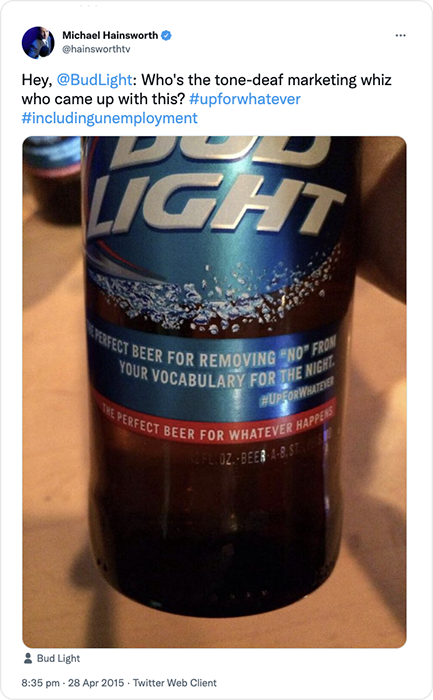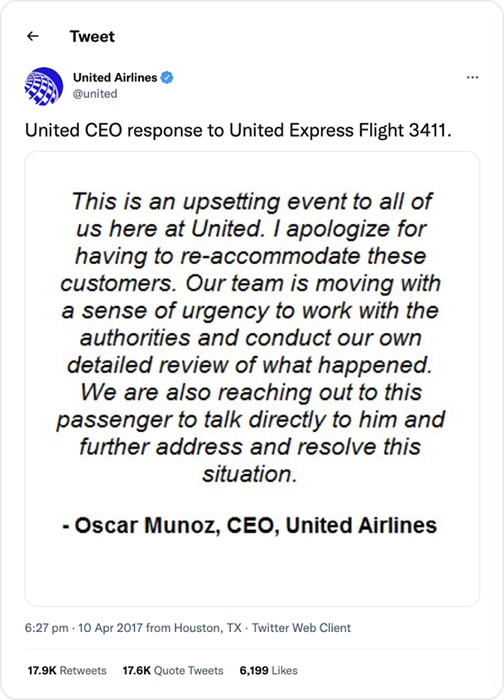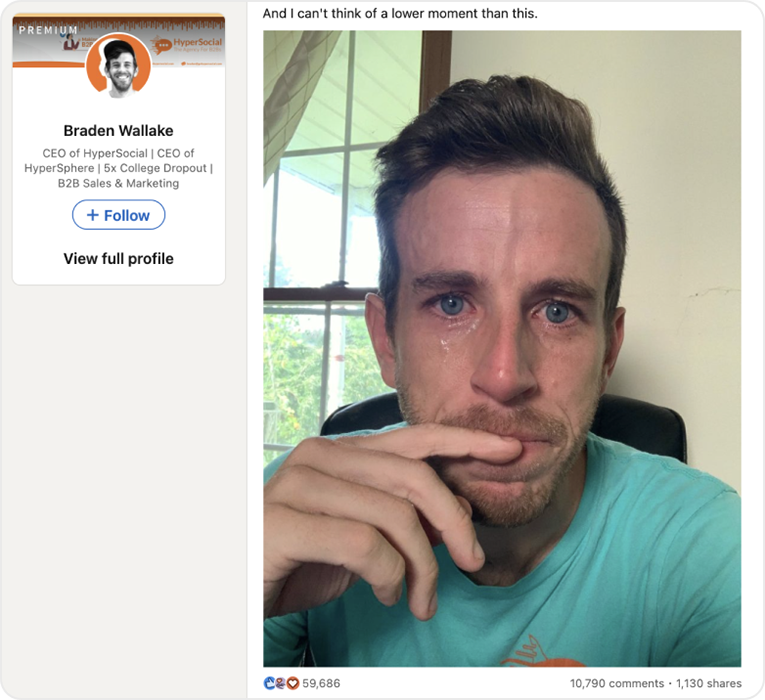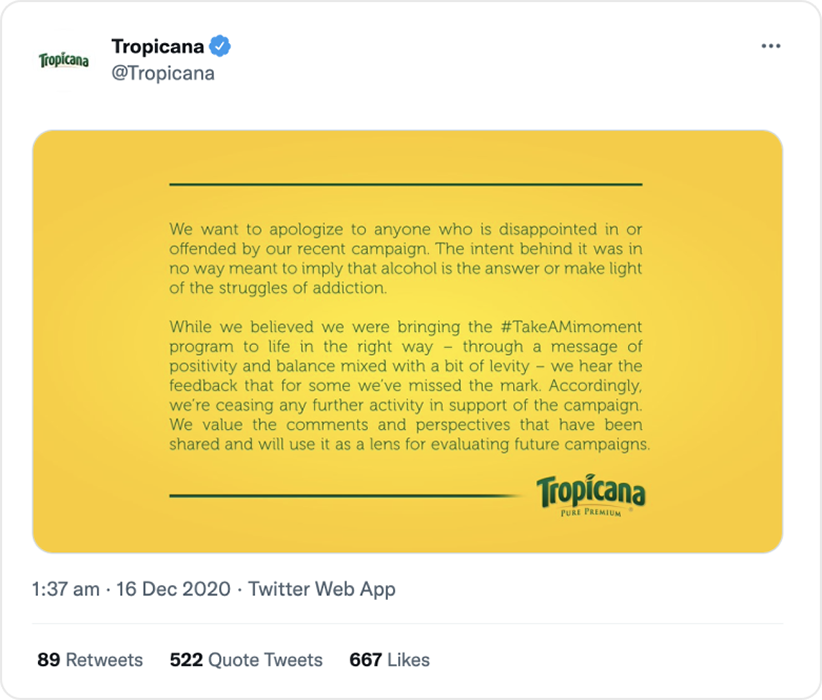When a PR disaster strikes and hits all the headlines, it stands out particularly strongly for PR professionals. We can’t help but empathize with the crisis communications team that is brought in to fix such an ugly mess, especially when it looks like the PR scandal could have been easily side-stepped with a little advanced consultation with their PR team.
But on the “bright side” of PR scandals, each brings along some valuable professional lessons to be learned. So while you may feel tempted to turn your eyes away from the cringe-worthy event, you should pay close attention to every move the company makes, as well as the reactions of the public.
Below, we’ve collected 5 recent public relations crises that not only made us cringe but also bring to light important reminders for all PR professionals.
PR Crisis #1: Bud Light’s “Up for Whatever” Campaign
In 2015, Bud Light kicked off its “Up for Whatever” ad campaign with a series of different messages printed on their product labels. One of these messages struck a nerve with the public in particular. It read, “The perfect beverage for deleting “no” from your language for the night.”
Although the company originally saw the line as playful and focused on allowing yourself to enjoy a good night out, many consumers immediately connected the message to irresponsible behavior and the many people who have been victimized while intoxicated.
The company acknowledged this insensitivity, apologized, and removed the message from its campaign.

Lesson Learned: Take a Global Perspective
Advertising campaigns are often the root of PR scandals. Ever see an ad and wonder, “How did no one in the room see how wrong this could go?” (Note to every advertising team: please bring in your PR team to review your ad campaigns before launch. Since we end up playing defense for the company’s missteps, we can usually spot a potential public outcry a mile away).
The bigger lesson here is that a diverse group of executives makes a company’s messages stronger. Companies need all kinds of voices to share how an ad or PR campaign can be read from perspectives across sex, race, and gender.
And if you find yourself in one of these rooms where something is getting approved that feels “a little off,” don’t be afraid to speak up! If you are having a reaction, it’s highly likely that others will have that reaction too.
PR Crisis #2: United Airlines Forcefully Removes a Passenger
If you’ve seen the viral photo of this public relations crisis, you probably already have this disaster burned into your memory. In 2017, United Airlines took major heat when one of its flight crews decided to forcibly remove a man from an overbooked flight.
The man was a doctor who insisted he needed to be on the flight to reach and treat his patients. Despite his plea, the airline called a security team that dragged him off the plane, visibly shaken and bloody.
Plane passengers witnessing the event appeared to stand with the ejected doctor. They took videos and photos and shared them on social media, where the distressing images immediately went viral.
This PR scandal didn’t end there, though. The company’s response added even more fuel to the fire, and acts as its own example of when public relations goes wrong. The CEO’s apology for the event felt defensive in nature and sounded much more focused on the distress of the airline than the distress of the bloodied passenger.

Lesson Learned: Make Sincere Apologies
An apology is not an apology if it’s not delivered in a humble manner that avoids all defensive inclinations.
If you are a PR rep in charge of handling a PR crisis, it is essential that you coach the executive making the apology. Don’t just write and hand off a statement for them to read. Bring them into the writing process and point out your reasoning for the selected language, coach them on how to answer questions in a concise manner, and remind them that the goal is to deliver the apology in a most sincere manner.
If you can’t get the executive to cooperate, you should select another company spokesperson to take on the role or to speak on their behalf.
You only get one opportunity to get your response out there, so work tirelessly to get it right.
PR Crisis #3: Better.com’s Layoffs
In late 2021, the CEO of Better.com, Vishal Garg, laid off 900 employees in a single Zoom call. On top of that, the layoff happened in the holiday month of December and only one day after the company secured $750 million in investment funding.
News of this company event spread quickly, and several communications executives within the company responded by handing in their resignations.
Garg then proceeded to make another PR mistake, by apologizing for the insensitive layoff technique to the company’s remaining employees, rather than to those who had been laid off.
Lesson Learned: Think it Through
Sometimes, company decisions appear to be made on the demands of time and cost efficiency, without any real thought for how human beings will feel about the moves.
This is how this particular decision came across.
In fact, this is one of those bad PR examples that feels like it could have been easily avoided if more executive leadership had been brought into the decision. A human resources team alone would have likely stopped this layoff decision in its tracks.
While it’s important for business leaders to be swift in making decisions, the big ones that affect human lives (think both employees and consumers), should be taken with greater care, discussion, and thought.
Otherwise your company gets marked as prioritizing the bottom line first, with little regard for your people’s livelihoods.
PR Crisis #4: HyperSocial’s Crying CEO
When HyperSocial’s CEO, Braden Wallake, posted a selfie of himself crying on LinkedIn, he obviously did not expect the immediate backlash he’d receive.
His post was intended to share his personal response to his layoff of two employees, and he claimed he just wanted to share the emotional difficulty he experienced in that task as a business leader.
However, despite the best of intentions, many found the post to be self-serving for the CEO. They claimed he was taking the spotlight and redirecting sympathy towards himself, rather than towards those who had lost their jobs.

Lesson Learned: Optics Matter
Although Wallake claims he does not regret the post, citing the positive responses he received from other business leaders, it is evident that optics matter when making public appearances.
Even when you believe your intentions are good, you have to put on your PR lens and consider how company or executive actions can look to the public eye.
In this case, Wallake may have at least considered that a statement about his personal disappointment would have been better received without the accompanying photo.
PR Crisis #5: Tropicana’s #TakeAMimoment Campaign
It’s no secret that the pandemic has been especially difficult for parents, particularly in the earliest days of 2020 when remote schooling fell entirely on their shoulders.
In December 2020, Tropicana’s #TakeAMimoment campaign attempted to make light of this situation by encouraging parents to slip away for secret mimosas. The campaign made a joke of hidden stashes of mimosa ingredients, particularly of their orange juice.
But for many, the act of secretive drinking for parents is a real issue, and one not to be taken lightly. The public outcry was swift.
In response, the company apologized for the campaign and simply stopped running it.

Lesson Learned: Admit to your Mistakes
If you take any lesson, take away that a company almost always benefits from a quick response with admission to a mistake. It’s your best shot at a PR recovery.
If your company also has a long history of trust, then such has an even better chance of being forgiven by the public. A direct and well-timed response shows people that you’ve received their message and are making corrections. Many times, it’s that acknowledgment that most are seeking.
Be Prepared
Even with the best of planning and PR know-how, PR disasters can still happen.
The best course of action you can take today is to have a PR crisis plan prepared in writing. It should be detailed and include specifics like:
- A list of the response team members.
- A plan to quickly coach executives in advance of their public statements.
- A goal to respond quickly, but not so quickly that responses aren’t completely vetted.
The development of this PR crisis plan should be accompanied by an ongoing company effort to build trust with the public by being a good community member.
How to do this? Share and make good on your company values, give back through sponsorships and donations, and practice corporate transparency and responsibility.
With this foundation set, your company is much more likely to survive any fallout from a PR disaster.
And finally, when facing a PR scandal, make your company statements and then move on. If you put everything into getting the first response right, you shouldn’t need to dwell on the matter. Fortunately, consumers are usually forgiving and ready to move on as well.

